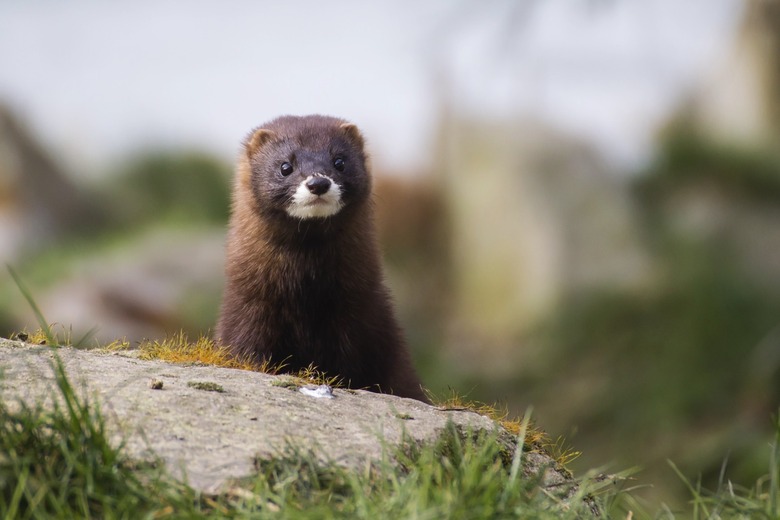Everything You Need To Know About The Most Dangerous Coronavirus Mutation So Far
- The Danish government revealed a few days ago that the novel coronavirus developed a dangerous mutation that may impact vaccine research.
- The mutated virus infected 12 people in Denmark, prompting lockdown measures and a decision to cull millions of animals in mink farms.
- Using genetic data from the Danish minks, Dutch researchers discovered that the same mutation developed inside their own mink farms earlier this year. The strain did not jump to humans at that time.
The fact that a coronavirus vaccine candidate has more than 90% efficacy according to Phase 3 interim data is proof of the best thing that happened during the pandemic. In less than a year since COVID-19 emerged quietly somewhere in China, scientists were able to come up with all sorts of options for drugs and vaccines. The purpose of lockdowns and restrictions wasn't only to prevent unnecessary deaths and allow healthcare workers to treat as many COVID-19 patients as possible. They also bought critical time that researchers need when dealing with a new pathogen.
We're starting to see the same thing happen again, and this time it concerns the most dangerous coronavirus mutation that has emerged so far.
A few days ago, Denmark announced that it decided to lock down an entire region and cull up to 17 million minks after finding that a SARS-CoV-2 strain originating from the animal infected at least 12 people. The Danish government said the mutation might threaten COVID-19 vaccine efforts, prompting the UK to block travel to and from the country. Some researchers said the new strain might lead to another pandemic, while others called for calm. Scientists from Denmark have already uploaded genetic sequences of the mink coronavirus, allowing international experts to study the strain — and the first results are already here.
The Netherlands confirmed the first cases of coronavirus-infected minks passing COVID-19 to people earlier this year. The local government also took measures to limit the spread of the virus, including sacrificing infected animals.
After looking at the data from Denmark, Dutch researchers have retrospectively concluded that the Danish mink coronavirus mutation also happened in Dutch mink. The difference between the two events is that the Dutch mink strain did not jump to humans.
The Danish mink mutation infected 12 individuals out of 200 who got COVID-19 from the animals. Those people showed resistance to neutralizing antibodies, an indication that the mutation impacted the spike protein of the virus. Most vaccines target the spike protein, as many people are aware. The protein is the key that opens the cell door to the virus. By preventing it from gaining entry, a vaccine would block the virus from replicating. As a result, a COVID-19 infection would be less severe and shorter-lived.
Any mutation at the spike protein level could render vaccines useless. And viruses do mutate, with the flu being the best example of that. The highly mutagenic nature of flu viruses is why a different flu vaccine is needed every year.
It's not just vaccines that are in danger. Neutralizing antibodies target the same spike protein to block the virus. A person who is immune to the main SARS-CoV-2 strain might risk infection from the Danish mink coronavirus. Drugs developed using neutralizing antibodies and plasma transfusions might not work on the Danish version of the virus either.
"We have once seen a mutant virus with a comparable mutation in the spike protein-encoding region, in mink in the Netherlands, but this mutant did not spread to humans, and the mink of the involved farm were culled," Wageningen University veterinary expert Win van der Poel told BBC News about the Danish mink mutation.
This might be one of the most important conclusions about this Danish mink mutation so far. If accurate, it tells us that the coronavirus is likely to develop the same change to infect the mink host better, but it might not make the virus more dangerous to humans. Given that the same mutation appeared in two separate places, it could appear in other mink populations. On the other hand, the report notes that Swedish scientists have not identified the same mutation in their local outbreaks.
The European Centers for Disease Control and Prevention (ECDC) will publish risk assessments on spreading the virus in mink farms. The mutation doesn't have a name, but the Danish outbreak caused by the mutation is apparently known as "cluster 5."
It's likely that vaccine developers are also studying the genetic code of the new coronavirus mutation and assessing risk for their experimental drugs. The mink mutation is hardly the first coronavirus mutation that scientists detailed. One of the most prominent ones is the D614G mutation, which became the dominant SARS-CoV-2 version worldwide. The virus mutated to become more infectious in early 2020, but the mutation did not make it more dangerous or more deadly. The D614G strain was first observed in Europe and the US, before making its way back to Asia.
